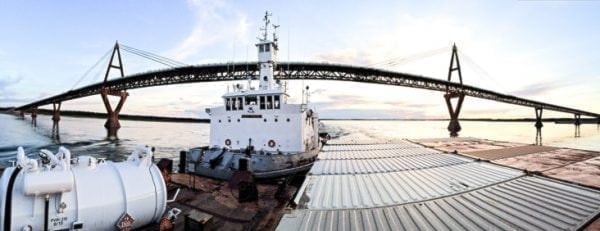The issue:
Border restrictions
We say:
Right move, but aging
The situation on the rapidly drying ground in Yellowknife and around the territory, one free of active Covid-19 cases, is clearly the result of the early and relatively strict orders issued by the GNWT's public health leadership.
Travel restrictions in particular have proven to be effective. Though unpopular at first and feeling more like a yoke around our necks with each passing day, they put the NWT in a position where we can breathe a little easier knowing our health-care system is in no current danger of being overwhelmed – which, it's worth remembering, is the point of social distancing and non-gathering orders from chief public health officer Dr. Kami Kandola.
As Stephen Ellis of Tides North wrote in News/North earlier this week, the economy wasn't exactly being all that it can be before the crisis took hold: mines are in decline (more bad news came on that front when Dominion Diamond Mines filed for creditor protection), we're dependent on federal funding, government tends to grow too fast while the private sector struggles to expand.
Jurisdictions around the world and within Canada are lifting and loosening their pandemic-inspired restrictions but the conversation is very much about the new normal, which is coming into focus in the near term at least as cities with closed streets and widened sidewalks to make room for pedestrians practising social distancing, shops with a just a handful of customers allowed in the store at a time and businesses finding ways to deliver products and receive payment with little or no physical contact.
It's clear that whatever the old normal was is gone, and that the transition to whatever awaits us is not going to be like flipping a switch from complete shutdown to a total and unfettered re-opening. Even with so many of us still stuck at home with bored children, things are happening and people are travelling in and out of the NWT.
Even with our border "closed" and residents holed up in what Ellis describes as #FortressNWT, dozens of people, maybe hundreds, are travelling in and out of Yellowknife every week. According to figures from the Department of Infrastructure, the Yellowknife Airport has received on average three flights every day since March 27. Since that date, 565 passengers from outside the territory travelled to and stayed in Yellowknife.
Commercial and passenger vehicles continue to whip up and down Highway 3. Again, according to the GNWT, data from the Deh Cho Bridge showed just a 10 per cent drop in the number of vehicles crossing in March compared to the same period last year – 11,467, or an average of 370 per day.
That doesn't sound like a fortress at all.
So, with assurances from Dr. Kandola that new restrictions for people who travel into the territory regularly for work, if effective, could create the conditions for rescinding some of the general orders keeping the rest of us from making the most of this late-blooming spring, it's safe to say that we're actively transitioning to a new normal now.
Which is why it's so important that our MLAs get on to the work of planning our emancipation. An accountability and oversight committee of MLAs has been meeting weekly, but the time for the full legislative assembly to step back into the spotlight has come. We need to know when we'll be able to get our hair cut, our teeth cleaned and our driver's licences renewed.
